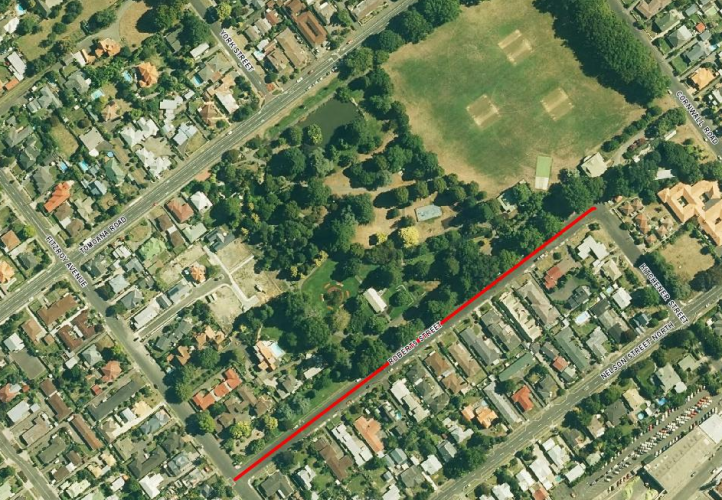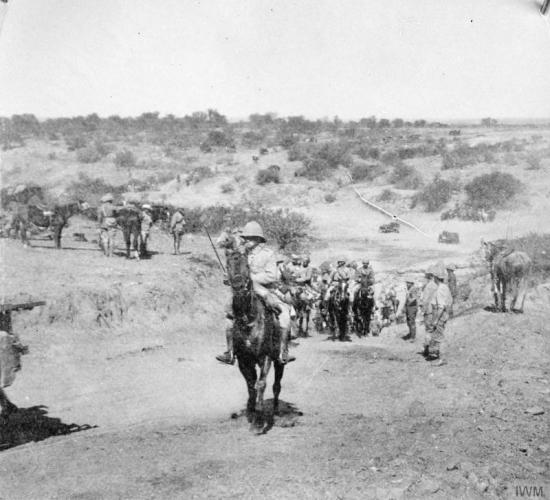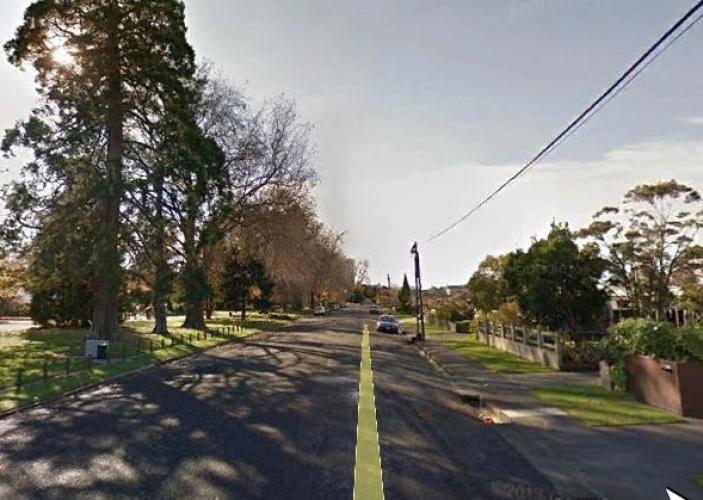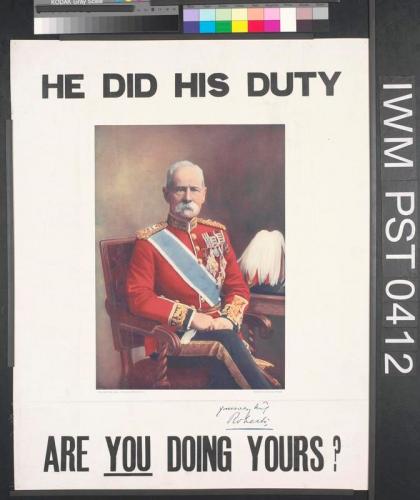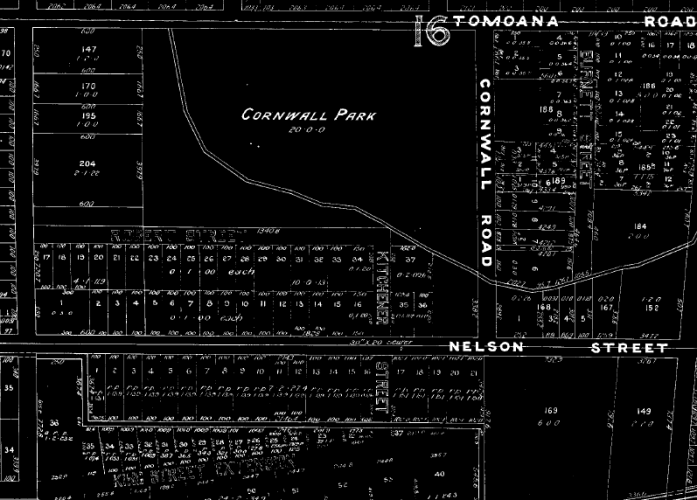056 Roberts St Hastings, street view 2017
Reason for the name
Field Marshal Frederick Sleigh Roberts, 1st Earl Roberts VC KG KP GCB OM GCSI GCIE KStJ VD PC (30 September 1832 – 14 November 1914) was a British soldier who was one of the most successful commanders of the 19th century.
Roberts Street adjoins Kitchener St. In the 2nd Boer War Lord Roberts handed over command to Kitchener. The streets are close to Cornwall Park in Hastings.
Roberts Street was being thought about in 1908. The extract from a cadastral map of that time shows the street names for Kitchener Road, Robert Street and the King Street extension “pencilled in”. Hastings Borough Council had a policy at that point in time of naming streets after English Generals and Admirals.
Author: Helen Gelletly, Cherie Flintoff, Madelon van Zijll de Jong, Katrina Barrett
Field Marshal Frederick Sleigh Roberts, 1st Earl Roberts VC KG KP GCB OM GCSI GCIE KStJ VD PC (30 September 1832 – 14 November 1914) was a British soldier who was one of the most successful commanders of the 19th century. He served in the Indian rebellion, the Expedition to Abyssinia and the Second Anglo-Afghan War before leading British Forces to success in the Second Boer War. He also became the last Commander-in-Chief of the Forces before the post was abolished in 1904.
He was born of Irish stock, in Cawnpore, India, where his father was commanding the 1st Bengal European Regiment. In the Boer War, Lord Roberts had wanted to go but was initially left in his role as Commander-in-Chief Ireland.
Lord Roberts’ son Freddie was fighting under Buller, and was one of the volunteers who rode forward into a storm of fire to help ensure two batteries of guns were not lost. Freddie was fatally shot and died soon after, and was posthumously awarded the Victoria Cross, making the Roberts one of only three pairs of father and son to be awarded it.
After Buller's defeat at Colenso in 1899, the third defeat of the infamous 'Black Week', Lord Roberts (age 67 at the time) was asked to assume command, accompanied by Kitchener as chief of staff. As Roberts accepted the command, the news of Freddie's death reached him. It devastated him and his family to lose his only and much-loved son, but still he went where country called.
After his appointment men from all over the British Empire rushed to volunteer to defend ‘Queen and country’. New Zealand committed another mounted contingent to the war.
A detachment of the First Contingent proved its worth early in their service. In early January 1900 they aided a British force in securing Slingersfontein farm. When the Boer General Koos De la Rey arrived on 15 January to retake the farm, the 60 New Zealanders, under Captain W.R.N. Madocks, and a company of the Yorkshire Regiment were forced to defend a hill that overlooked Slingersfontein. With the British forces suffering heavy casualties, Madocks sent some of his troops to the Boer flank, then led a bayonet charge against their front. The enemy was forced to retreat, leaving behind 21 dead at a cost of only two New Zealand lives. The New Zealanders were praised for their actions, Madocks was promoted to Major and the hill was named New Zealand Hill.
In South Africa 'Bobs and K' struggled to overcome serious British shortcomings in staff work, maps, intelligence and mounted troops. Roberts issued new tactical instructions, added 3,000 Mounted Infantry to his force, formed a large intelligence department and reorganised transport. Roberts proposed to march 500 miles to seize Bloemfontein and Pretoria and on to the furthest borders of the Transvaal.
In February 1900 Lord Roberts assembled a force of 37,000 infantry and cavalry, including the New Zealand Mounted Rifles, to capture the two Boer capitals of Bloemfontein and Pretoria. Continuing their service with Major-General French's Division, the First Contingent assisted the reorganised British forces, under commander-in-chief Field Marshal Lord Roberts, in relieving the besieged diamond-mining town of Kimberley.
John Walter Callaway (Wāta te Wahahuia) is credited with being the first Māori to serve in the South African War. After arriving in South Africa with the First Contingent, Callaway served as both a despatch rider and as a scout, being recognised for ‘Meritorious Service’ by the British Commander-in-Chief, Field Marshal Lord Frederick Roberts. He served with the British forces that relieved the besieged town of Kimberley on 15 February 1900 and with those that managed to break the Boer defences at Driefontein, for which he was awarded the Driefontein clasp.
The cavalry did well in trying conditions of heat, dust and thirst. The relief of Kimberley and the capture of General Cronje and over 4,000 Boers on the Modder River at Paardeberg marked the first major British victories, the turning point of the war. The press exulted. 'Taffy' Gwynne, chief correspondent of Reuters, wrote, 'Now the man for me, parexcellence [sic], is Bobs, gallant Bobs, plucky Bobs, magnificent Bobs. How splendidly he has managed the whole thing and what tremendous risks he has been willing to run.'
In the beginning of February 1900 it was announced that New Zealand would send a fourth contingent, approximately three squadrons, but so great was the enthusiasm and so plentiful the supply of candidates that the contribution was increased to two full battalions of Mounted Rifles, known as the 4th and 5th New Zealand Contingents. They sailed at the end of March, and disembarked at Beira at the end of April. The two New Zealand contingents took part in the attempt to relieve Colonel Hore at Elands River.
In Lord Roberts' telegram of 18th August he spoke of an engagement at Buffelshoek, in which Carrington and Lord Erroll drove back the enemy in the vicinity of Elands River on 16th August, the day on which Hore was relieved by Lord Kitchener from the south. Lord Roberts remarked, "The New Zealanders particularly distinguished themselves. Our casualties: killed, New Zealand MI, Captain Harvey and 2 men; wounded, 9 men". Captain J A Harvey was a squadron commander in the 4th contingent. Captain Fulton, Indian Staff Corps attached, and Lieutenant Collins, both of the 4th contingent, were wounded.
General Carrington left the seat of war about the end of August. After that both New Zealand contingents saw much fighting under Lord Methuen, General Douglas, and other leaders in the Western Transvaal. Between 9th and 12th September both had casualties near Ottoshoop, in an engagement in which General Douglas took 40 prisoners. In Lord Roberts' telegram of 22nd October 1900, he said: "Lord Erroll occupied Buffelshoek from Ottoshoop on the 19th, without any casualties, owing to the good work done by the New Zealanders under Captain Poison of the 5th Regiment Imperial Bushmen, New Zealand Contingent".
After a pause the advance continued. Bloemfontein capital of the Orange Free State was occupied on 13 March. Buller was able to advance in Natal. The strategic initiative had passed to the British, nine weeks after Roberts's arrival and four weeks after the start of his offensive. He renewed his advance in May, into the Transvaal, and occupied Johannesburg and Pretoria and annexed the two Boer states. After a final battle at Diamond Hill, the Boer forces dispersed. Komati Poort, on the border with Mozambique, was occupied. In nine months Roberts had advanced 500 miles, defeated the main Boer armies, and occupied their capitals.
What Roberts failed to do was to end the war, which continued for a further seventeen months, as the Boers took to commando tactics. The farm burning, hostages, concentration camps were started by him and then introduced full-scale by Kitchener, who succeeded Roberts and finally ended the war in May, 1902. The farm burnings were designed to destroy the supplies of the Boer commandos and the camps to house displaced families. After Kitchener adopted this policy on a wide scale there were too many Boers displaced, too few British forces to manage them and neglect, lack of supplies and poor hygiene led to disease and a very high death rate. A protest campaign headed by British welfare campaigner Emily Hobhouse led to improvements later in the war.
Meanwhile, Roberts returned to England to the Order of the Garter and the top job of Commander-in-Chief of the British army, replacing Wolseley. Installed in the War Office he supported Kitchener, and sent out Ian Hamilton as chief of staff. Hamilton was able to pull off a victory on the stony hillside at Rooiwal which helped convince Boer leaders to seek peace.
Roberts feared that the empire would decline if their countrymen did not make changes and become less complacent. He asked Kipling, who felt the same way, to write a poem to help wake up the populace. Roberts also introduced training in accurate shooting, better education for officers and upgraded weaponry.
He was replaced in the War Office in 1904, and became President of the National Service League in 1905, advocating for compulsory national service for home defence. He also encouraged the mass training of civilians in rifle shooting skills through membership of shooting clubs, and a facsimile of his signature still appears on official targets of the National Smallbore Rifle Association.
In 1912 Lord Roberts made a speech warning of Germany’s growing military power and threat. Noting he was by then eighty, he implored the country to prepare “if these were my last words, I still should say to you—“arm yourselves”.” He was criticised by the Liberal Press, but proven right by later events.
In August 1914 Kitchener, now Secretary of State for War, appointed Roberts Colonel-in-Chief of overseas forces in England (a sinecure). Roberts decided to visit the Indian soldiers in France. The journalist Leo Amery wrote in his diary: ‘Meeting the Indians was a special delight to him and he insisted on stopping his car and talking to every turbaned soldier he met, and visited them in their hospitals. Old Pertab Singh [Maharajah of Jodhpur] was here to tea the day he came to us, and it was great to see the devotion in the old Indian warrior's eyes and his joy when Bobs addressed him as "dear old friend".'
Commands
Kuram field force
Kabul and Kandahar field forces
Governor of Natal
Commander-in-Chief of British forces in South Africa
Commander-in-Chief in Madras
Commander-in-Chief, India
Commander-in-Chief, Ireland
Command of British troops in Second Anglo-Boer War
Commander-in-Chief of the Forces
Battles/wars
Indian Rebellion of 1857
Siege of Delhi
Siege of Lucknow
Umbeyla Campaign
1868 Expedition to Abyssinia
Battle of Magdala
Lushai Expedition (1871–1872)
Second Anglo-Afghan War
Battle of Charasiab
Battle of Peiwar Kotal
Siege of the Sherpur Cantonment
Battle of Kandahar
Second Boer War
Siege of Kimberley
Battle of Paardeberg
Battle of Poplar Grove
Battle of Diamond Hill
Battle of Bergendal
Awards
Victoria Cross
Knight of the Order of the Garter
Knight of the Order of St Patrick
Knight Grand Cross of the Order of the Bath
Member of the Order of Merit
Knight Grand Commander of the Order of the Star of India
Knight Grand Commander of the Order of the Indian Empire
Knight of the Order of St John
On 13 November, Roberts caught a chill climbing to the top of the Scherpenberg near Messines for a distant view of the trenches. It quickly turned to pneumonia, and he died the next day. The Sunday night edition of The Times of 15 November headed its front page 'Sudden Death of Lord Roberts':
A profound shock of sorrow will be felt by the nation at the announcement of the death of Field Marshal Lord Roberts. . . One of the most famous and best beloved of British soldiers passes away in an hour of national trial, to prepare for which he had exerted himself with unsparing devotion.
After lying in state in Westminster Hall (one of only two people who were not of the royal family to do so during the 20th century, the other being Sir Winston Churchill), he was given a state funeral and was then buried in St. Paul's Cathedral.
Kipling wrote his third Roberts poem in tribute to Lord Roberts, about dying on the battlefield in France in 1914. The poem sums up his long-serving leadership, his integrity, his friendship with the soldiers and his wisdom. One stanza is copied here and the poem can be found online or in Kipling’s works.
…Clean, simple, valiant, well-beloved,
Flawless in faith and fame,
Whom neither ease nor honours moved
An hair's-breadth from his aim….

